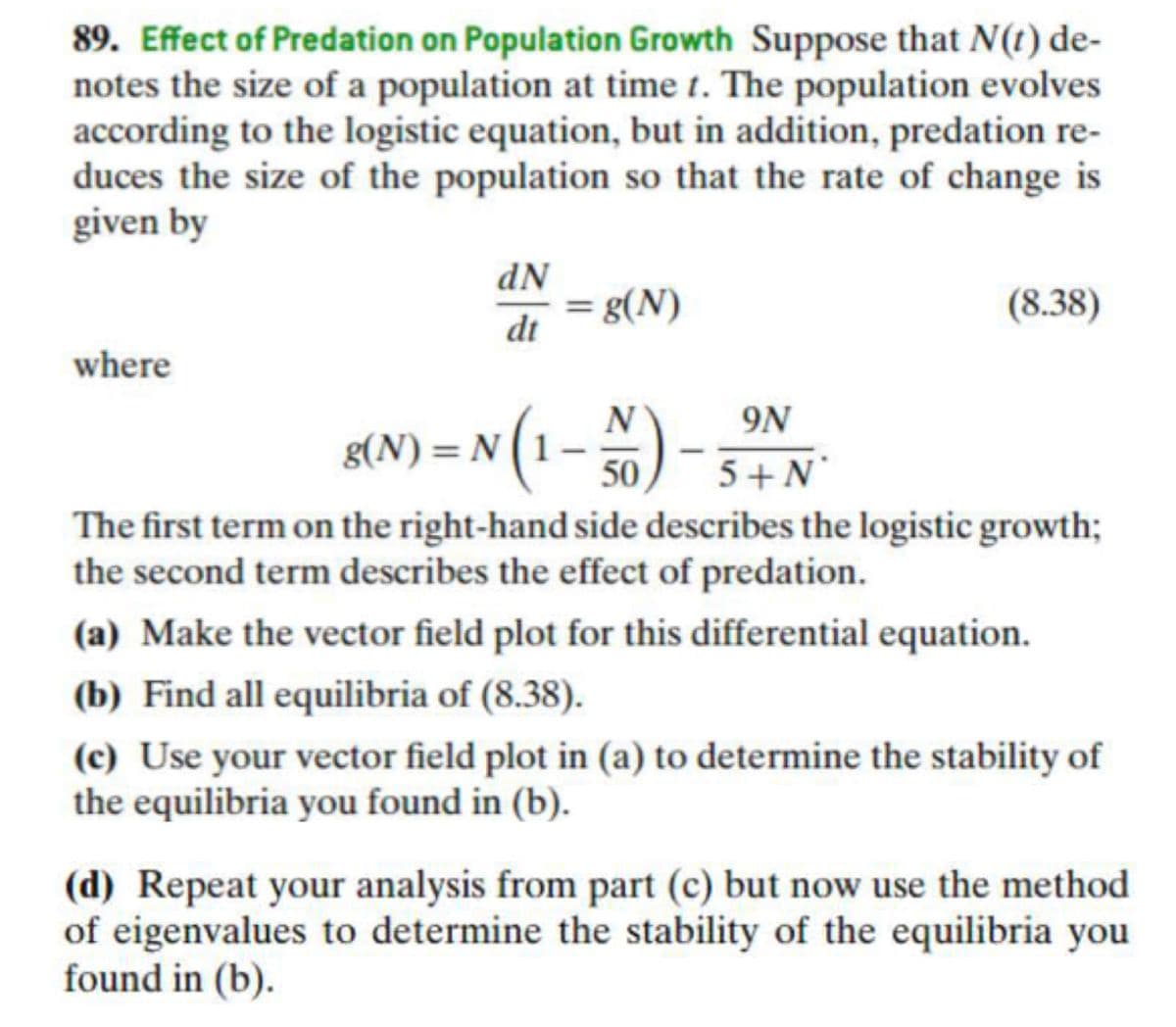89. Effect of Predation on Population Growth Suppose that N(t) de- notes the size of a population at time t. The population evolves according to the logistic equation, but in addition, predation re- duces the size of the population so that the rate of change is given by dN = g(N) dt (8.38) where N 9N g(N) = N (1– 50 5+N° The first term on the right-hand side describes the logistic growth; the second term describes the effect of predation. (a) Make the vector field plot for this differential equation. (b) Find all equilibria of (8.38). (c) Use your vector field plot in (a) to determine the stability of the equilibria you found in (b). (d) Repeat your analysis from part (c) but now use the method of eigenvalues to determine the stability of the equilibria you found in (b).

Disclaimer: Since you have posted a question with multiple sub-parts, we will solve the first three sub-parts for you. To get the remaining sub-part solved, please repost the complete question and
mention the sub-parts to be solved.
The slope field is the graphical representation of the solution of a differential equation. Through a slope field, without solving an equation, we can understand the nature of solution curves. Also, the equilibrium points can also be analyzed from the slope field. If all the nearby solutions converge to an equilibrium point, it is the source; otherwise, it is a sink.
In the given question, a differential equation is provided. We illustrate the corresponding slope field and determine the equilibrium points.
Trending now
This is a popular solution!
Step by step
Solved in 4 steps with 1 images




